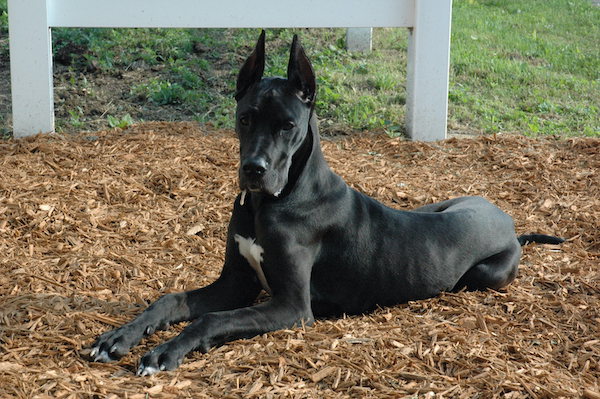
There’s no doubt that dogs are one of the most popular pets globally. But when it comes to their reproductive cycle, there seems to be a lot of mystery surrounding it. In this post, we’ll take a look at how long a dog stays in heat.
How Long Does a Dog Stay in Heat?
Typically, dogs stay in proestrus for anywhere from 9 to 19 days, and they can go into standing heat as early as the first or second day. They may take up to 24 hours before they give themselves to a male dog, which is usually the best time to breed her.
If you know what days your female dog has heat, breeding her should be easy. But if you don’t want to produce her yet or ever, then learning how long a dog stays in heat will help you keep her isolated until she gets out of it. For instance, if you have a female dog in heat from days 7 to 9, you can keep her away from other male dogs until she’s done.
What is a Dog’s Heat Cycle?
 Dogs are seasonally polyestrous, which means that they have multiple heat cycles per year instead of just one continuous heat period. A female dog’s sexual maturity begins between six and twelve months of age. The heat cycle happens twice a year, sometimes more for smaller dogs. The first heat period is proestrus, lasting anywhere from 9 to 19 days. During this time, the female dog becomes sexually mature and can breed with male dogs.
Dogs are seasonally polyestrous, which means that they have multiple heat cycles per year instead of just one continuous heat period. A female dog’s sexual maturity begins between six and twelve months of age. The heat cycle happens twice a year, sometimes more for smaller dogs. The first heat period is proestrus, lasting anywhere from 9 to 19 days. During this time, the female dog becomes sexually mature and can breed with male dogs.
After proestrus comes estrus, which is when the female dog becomes receptive to male dogs, it lasts anywhere from 5 to 9 days, and she will most likely go into standing heat. This is when most breeders try mating her with a male dog. A female dog’s gestation period ranges between 58 to 63 days, so it’s vital that you know when she is in heat if you want to breed her.
Factors Affecting How Long a Dog Stays in Heat
A few things can affect how long a dog stays in heat. These include the age of the female dog, her size, and whether she’s been bred before or not.
Age and Size
Smaller female dogs typically go into heat and come out of it sooner than larger female Dogs. Similarly, younger female dogs usually have shorter heat cycles than older ones.
Breeding History
If a female dog has been bred before, then her next heat cycle will likely be shorter than if she has never been bred before. When a female dog is bred, her body releases hormones that help her prepare for pregnancy. These hormones will shorten the length of her next heat cycle.
Breed
Some breeds of dogs, such as the Basenji, do not go into heat at all. Other species, such as the German Shepherd Dog, may have heat cycles that last up to three months. So, if you’re wondering how long a dog stays in heat, it’s essential to consider your dog’s breed.
Environmental Changes
Environmental changes can also affect how long a dog stays in heat. For instance, if the female dog is stressed or there is a lot of noise or activity going on around her, her heat cycle may be shorter than usual.
Signs of a Dog in Heat
It’s not always easy to tell if a dog is in heat, but there are some signs that you can watch out for. These include:

Swollen Vulva and Vaginal Discharge
A female dog in heat will have an enlarged vulva with a bloody discharge. You can check this by gently pressing on her belly or holding her in your lap. Her vulva should feel like a small, soft balloon.
Increased Attraction to Male Dogs
A female dog in heat will be more attracted to male dogs than usual. She may start following them around and trying to get close to them. This is especially true if there is a male dog in the vicinity.
Behavioral Changes
A female dog in heat may act differently than she usually does. She may be more moody or excited, and she may try to escape from confinement. Other behavioral changes include excessive barking, restlessness, and restlessness.
In rare cases, a female dog may become vicious if she does not want to be bred. Some signs of this include urinating or defecating in the house, digging at carpets and furniture, and trying to escape from confinement.
Anal Tucking
When the female is in standing heat, you may notice that she tucks her bottom behind her when she walks. This allows the male to get closer to her and makes mating easier.
Spaying Your Pet
If you don’t want your pet to have puppies, you can have her spayed. Spaying is a surgical procedure that removes the female dog’s reproductive organs. It’s a safe and standard procedure, and it can be done at any age. This will permanently stop her from going into heat.
 Pros of Spaying a Dog
Pros of Spaying a Dog
There are several advantages to spaying a female dog.
Prevents Unwanted Pregnancies
Spaying a female dog before she has her first heat cycle significantly reduces the chances of getting pregnant. This is especially important if you don’t want your pet to have puppies. It is also crucial if you have a female dog that goes into heat often or a male dog that frequently escapes from its home and finds a mate.
Prevents Certain Cancers
In females, spaying can reduce the risk of ovarian cyst and uterine infections. In addition, spaying may help reduce the chances of breast cancer later in life. If she isn’t spayed, a dog can also get pyometra, a severe uterine infection. Pyometra is an emergency condition, and it can be life-threatening.
Quiets Discomfort
If your pet is in heat, she may show several signs of discomfort. She may whine or whimper more than usual, lick her genitals excessively, or go into hiding. Spaying a female dog in heat will end the symptoms of discomfort.
Eliminates the Risk of Unwanted Behavior
Female dogs that aren’t spayed may exhibit unwanted behaviors, such as roaming in search of a mate, urine marking, and aggression towards other animals and people. Spaying a female dog can prevent these behaviors from occurring.
Cons of Spaying a Dog
There are some disadvantages to spaying a dog.
Anesthesia Risks
A spay surgery is an invasive procedure that carries certain risks, such as death from anesthesia or infection. In addition, the recovery period may be painful for your pet. Spaying before puberty is recommended because it’s less invasive and safer.
Possible Weight Gain
Spaying a dog may increase weight gain over the long term, although some pets lose weight after being spayed. Still, you can do things to help your pet maintain her ideal weight. Talk to your vet about diet options that will work for your pet.
Irregular Heat Cycles
Spaying a female dog may cause her to have irregular heat cycles. In some cases, she may not have any more heat cycles at all. This is not a common problem, but it’s something to be aware of.
Dogs are seasonally polyestrous, which means they have multiple periods of heat throughout the year. The typical heat cycle in dogs lasts about three weeks, although some dogs may have heats that last up to five weeks. Dogs usually come into heat between six and twelve months of age, but it can happen as early as four months or as late as eighteen months. Some female dogs may go through menopause at around seven years old, while others may continue to have heats until ten or eleven years old. So how long does a dog stay in heat? It depends on the individual dog.




